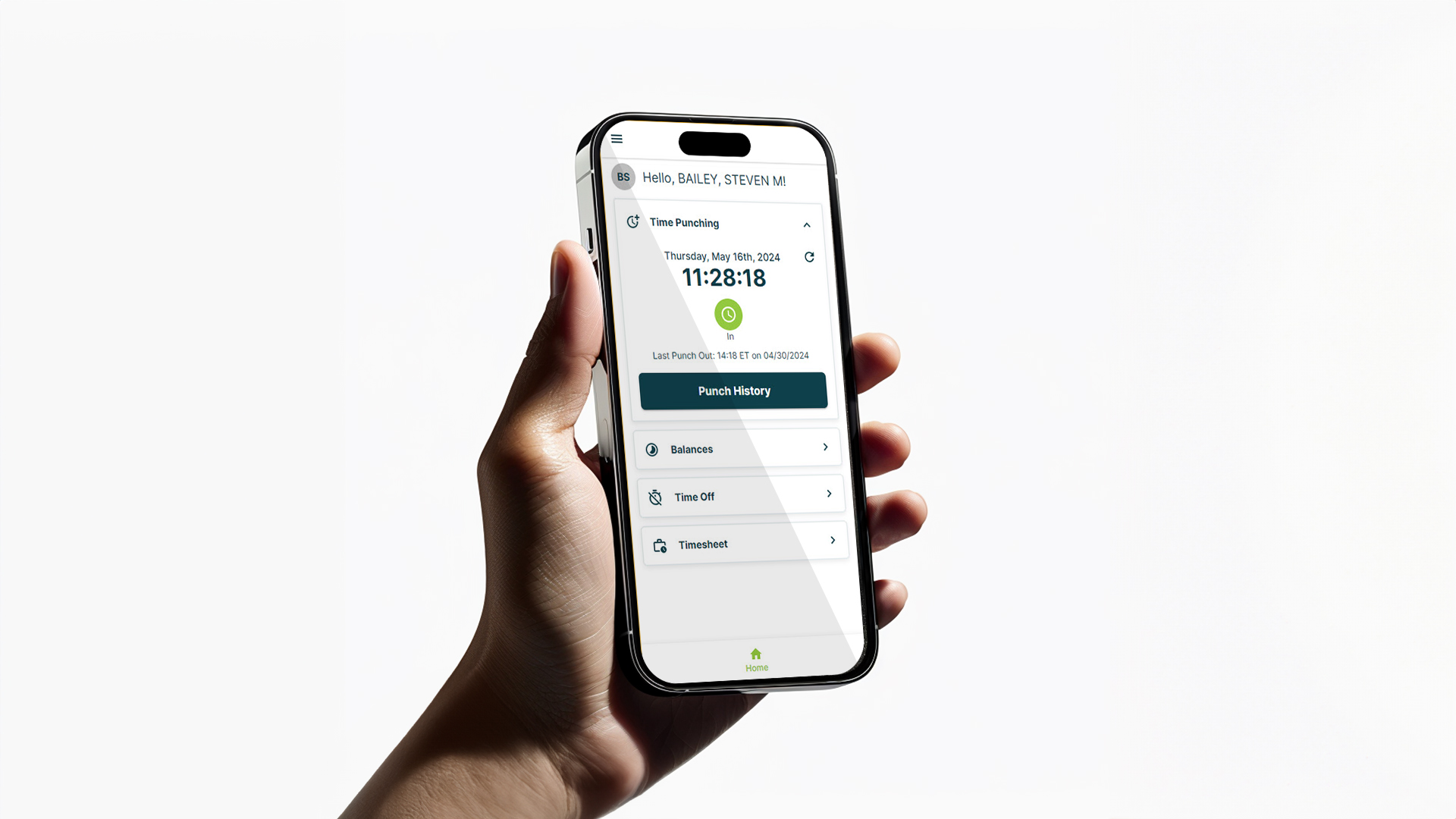Best Solutions for Employee Time Tracking Errors
Accurate time tracking is crucial to effective project management and overall productivity in any business. However, it’s not uncommon for organizations to encounter challenges that lead to errors.
In fact, US employers say they have to correct mistakes on 80 percent of the timesheets their employees submit. From forgetting to log hours to inaccurate time entries and fragmented tracking, these errors can significantly affect individual and team performance. By understanding and rectifying these errors, you can optimize time management, improve project outcomes, and foster a more efficient work environment.
Error #1: Estimating or Rounding Time Worked
When it comes to employee time tracking, many employers and employees alike make the mistake of simply estimating or rounding as they record time worked. This can be an easy error to make, as it saves the time spent tediously keeping track of every minute spent on the job. However, when you estimate or round these seemingly minuscule minutes, hours are lost cumulatively, resulting in overpayment or underpayments to employees.
Timekeeping should be as accurate as possible. Recently, the California Supreme Court cracked down on this practice, ruling that rounding may not be applied to meal periods. As a result, employers are encouraged to use an employee time tracking system that can identify instances of missed, shortened, or late breaks. Employers must also follow up with employees to record the reasons for deviation to prevent legal issues. While rounding up a 21-minute lunch break to 30 minutes might seem harmless, this decision has made it clear that employers need to track employee breaks down to the minute. This will protect worker welfare and prevent legal issues from arising.
Aside from warding off legal problems, accurate time tracking also allows companies to gain insights into productivity trends and identify bottlenecks. This will enable businesses to make informed resource allocation and project management decisions. Estimating or rounding time can hinder the ability to gather reliable data on employee productivity, leading to suboptimal decision-making.
Error #2: Inaccurately Tracking Meal and Work Breaks
If the California Supreme Court decision taught us anything, it’s that accurately tracking meal and work breaks down to the minute is an essential practice for employers to implement. This can be challenging to do for several reasons. For example, employees may take breaks of different lengths, ranging from a few minutes to an hour or more. This variation makes it challenging to have a standardized approach to tracking break times.
Additionally, some employees may not adhere to prescribed break schedules by skipping breaks altogether or taking longer breaks than allowed. Or, employees may take informal breaks or short pauses throughout the day that aren’t officially recorded. This non-compliance makes it challenging to track break times for payroll and compliance purposes accurately. As a result, these breaks can add up significantly and impact productivity if they go unnoticed.
Many states and jurisdictions have specific labor laws that dictate the minimum duration and frequency of meal and work breaks, such as California’s meal break policy. Accurate employee time tracking ensures compliance with these laws, reducing legal risks and potential penalties. Overall, precise break tracking using employee time tracking software enables better workforce management. Therefore, companies can anticipate staffing needs during peak times and avoid scheduling conflicts.
Error #3: Buddy Punching
Buddy punching refers to the practice of one employee clocking in or out on behalf of another employee. This is usually done to falsify attendance records. Unfortunately, this practice is not uncommon, especially in retail, restaurant, medical, and manufacturing spaces. Most of these types of businesses pay an hourly wage and enforce strict employee time tracking policies. Employees may be tempted to cut corners and falsify attendance records to help out a coworker. In some cases, supervisors might even manipulate timesheets to reflect that a project took a certain number of hours to complete, even if it was finished in less time than anticipated. This may seem harmless, but it can lead to time theft, payroll inaccuracies, compliance and legal risks, and an unfair work environment for employees.
Buddy punching harms businesses significantly over time, as companies must invest additional time and resources in detecting and addressing incidents. Implementing measures to prevent buddy punching, investigating discrepancies, and enacting corrective actions can create an administrative burden for HR departments. To eliminate buddy punching and create an environment of accurate timekeeping, companies can implement a robust employee time tracking system and employ biometric verification methods, thus making it impossible for employees to falsify attendance records.
Error #4: Lack of Regular Audits
Regular audits play a crucial role in ensuring efficient operations and maintaining a productive work environment. Audits provide management with the means to identify errors or anomalies in time tracked, allowing for timely corrective actions. Also, audits ensure compliance with labor laws and regulations governing working hours, breaks, and overtime. Failing to conduct audits puts the company at risk of unknowingly violating these laws This can lead to legal consequences, penalties, and damage to reputations.
By conducting audits, businesses gain valuable insights into patterns and trends in employee time tracking. This information is vital for effective workforce management, enabling employers to address attendance issues promptly. Whether it’s excessive absenteeism or chronic tardiness, regular audits allow for early identification and intervention. In doing so, businesses can prevent a negative impact on overall productivity.
Additionally, routine audits allow businesses to streamline processes, enhance productivity, and reduce costs. By analyzing attendance data and identifying areas for improvement, companies can implement strategies to optimize resource allocation and scheduling. Without audits, valuable insights and feedback are missed. This leads to a hindrance in the company’s ability to identify operational inefficiencies and make informed decisions.
Error #5: Inconsistency in Applying Company Policies
Consistency is vital to maintaining a healthy work environment. When time and attendance policies are inconsistently applied, employees can become confused about what is expected of them. Employees may be uncertain about when to take breaks, how to manage their time, and what is deemed acceptable within the organization.
Inconsistent policy application also erodes trust between employees and management. When policies aren’t uniformly enforced, employees may perceive favoritism or bias, leading to unfairness within the organization. This can damage employee and employer relationships. As a result, this can lead to decreased morale and engagement and in some cases create legal risk.
Work-life balance is more difficult when employee time tracking policies aren’t streamlined. When some employees are consistently granted flexibility or exceptions while others aren’t, it creates disparities in work schedules. This imbalance disrupts the ability to maintain a healthy integration between personal and professional life. Over time, this leads to increased stress and dissatisfaction among employees.
Overall, inconsistent time and attendance policy application has far-reaching consequences that negatively impact employees and the organization. To foster a positive work environment and enhance productivity, organizations must ensure that policies are consistently and fairly applied to all employees.
Ecotime Can Solve the Most Common Employee Time Tracking Errors
Ecotime by HBS offers a comprehensive employee time tracking software solution that can effectively eliminate time and attendance errors in the workplace. With automated tracking, employers can throw out their manual methods of timekeeping. Employees can clock in and out electronically, reducing the chances of human errors in recording working hours.
Additionally, Ecotime ensures accurate recording of employee attendance by using advanced technologies, such as biometric authentication, including fingerprint or facial recognition. This eliminates the possibility of time theft or buddy punching. It also ensures that the recorded time is attributed to the correct employee. Ecotime also has the ability to automate pay rules. No more manual calculations to determine overtime or inconsistency between departments. With our solution, policies are consistently applied preventing legal issues, especially when union contracts, freelance, and other position types are involved. Our software integrates with other HR and payroll systems, providing accurate and consistent data transfer. This integration minimizes the risk of data entry errors and ensures that the recorded time and attendance information aligns with other critical HR processes.
By leveraging the advanced features and functionalities of Ecotime by HBS, employers can reduce the amount of re-work. This not only improves accuracy and efficiency but also saves valuable time and resources that would otherwise be spent on manual reconciliation and correction of attendance records. Request a demo for Ecotime today, and start solving your most common employee time tracking errors!












